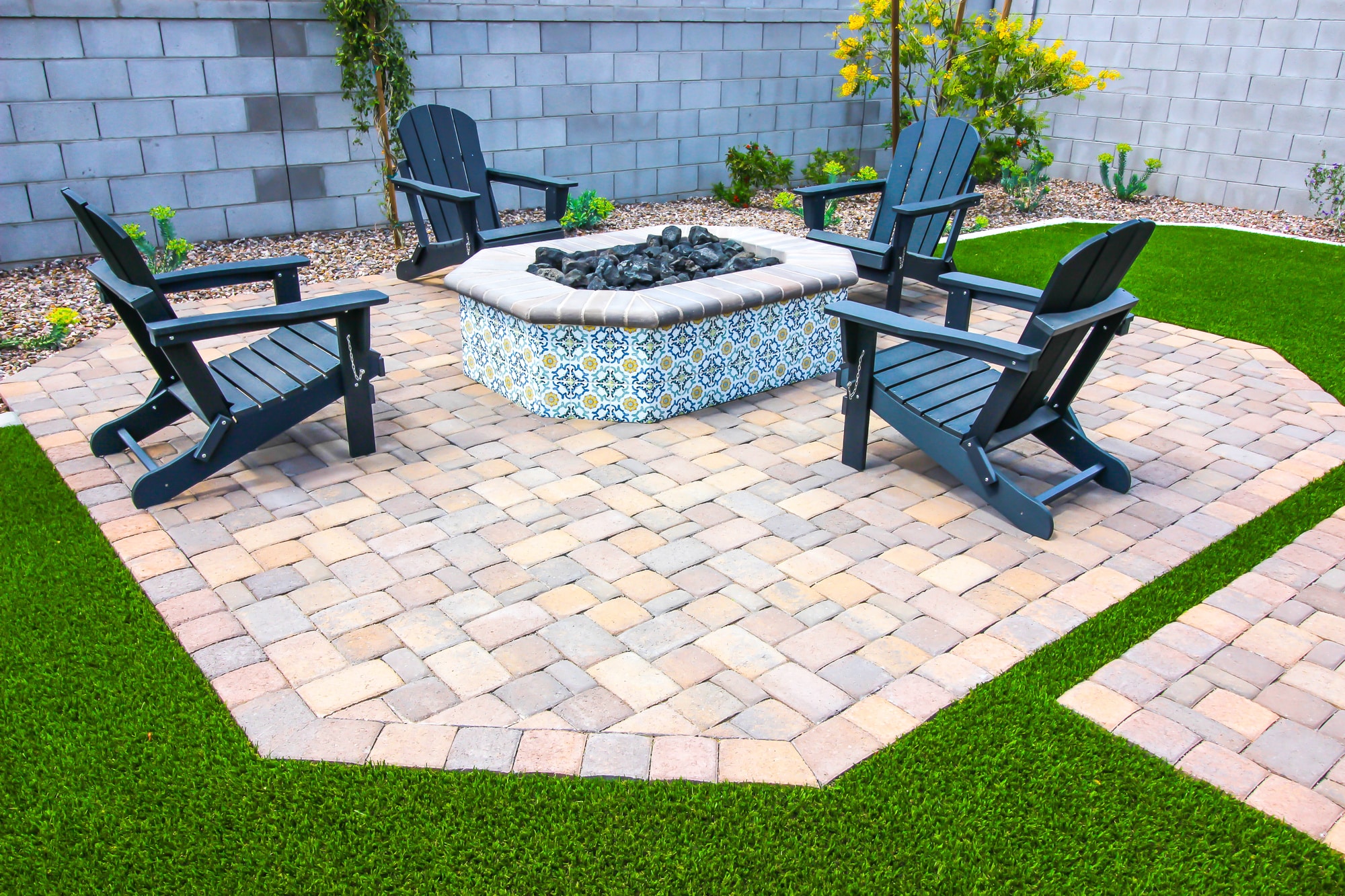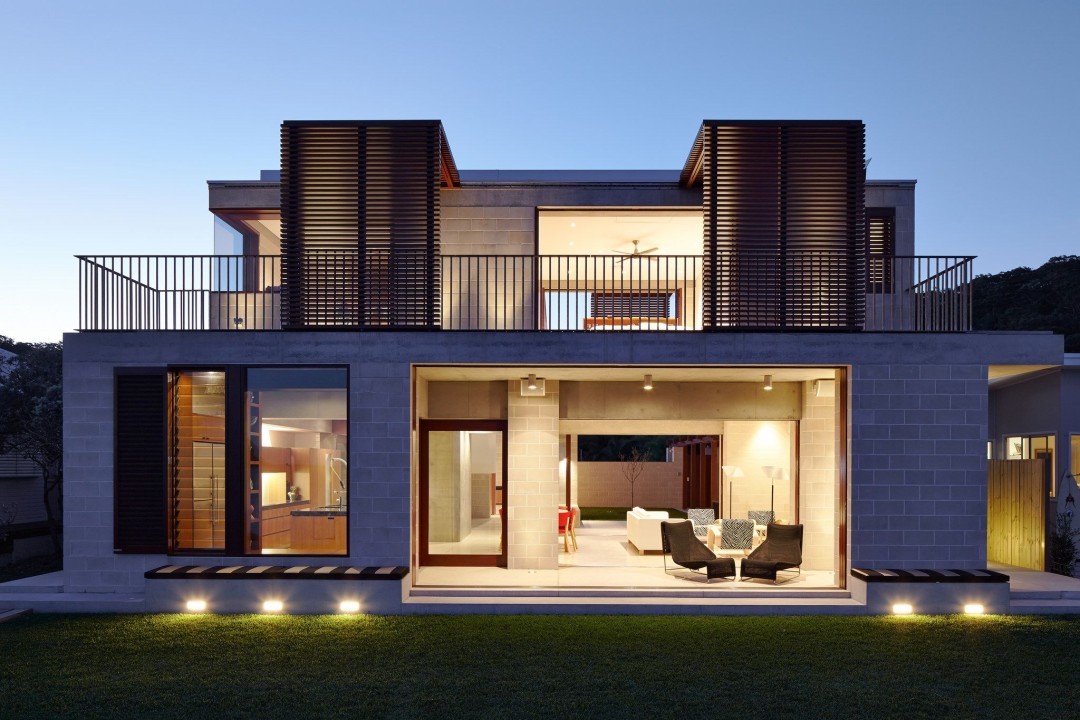A Guide to Leveling-Up Your Yard with Natural Products
Have you ever felt that your yard needs a makeover? As you step outside, do you feel invigorated, or does your dull garden make you sad? Well, you’re probably not alone. That’s how your neighbors and visitors would feel when looking at your property.
A home’s attractiveness is often judged by how it looks from the outside. For example, well-kept lawns and great landscaping can increase the value of your home by as much as 20%. Homes with excellent curb appeal can sell 7% higher and much faster. (1)
Whether you put your property on the market or not, maintaining a vibrant backyard design always pays off. Having one instantly uplifts your mood and reflects your values as a homeowner.
So, have you been itching for an exterior upgrade? Using natural products can be a game-changer! These materials can transform your lackluster yard into an aesthetic backyard without hurting the environment. Read on for some valuable backyard ideas using eco-friendly design elements.
Organic Product Options for An Aesthetic Backyard
Nature offers several renewable and readily available options to spruce up our homes. The key is finding the material that fits your design vision. Here are some of the most common choices:
Natural Stones for Pathways, Stairs, and Walls
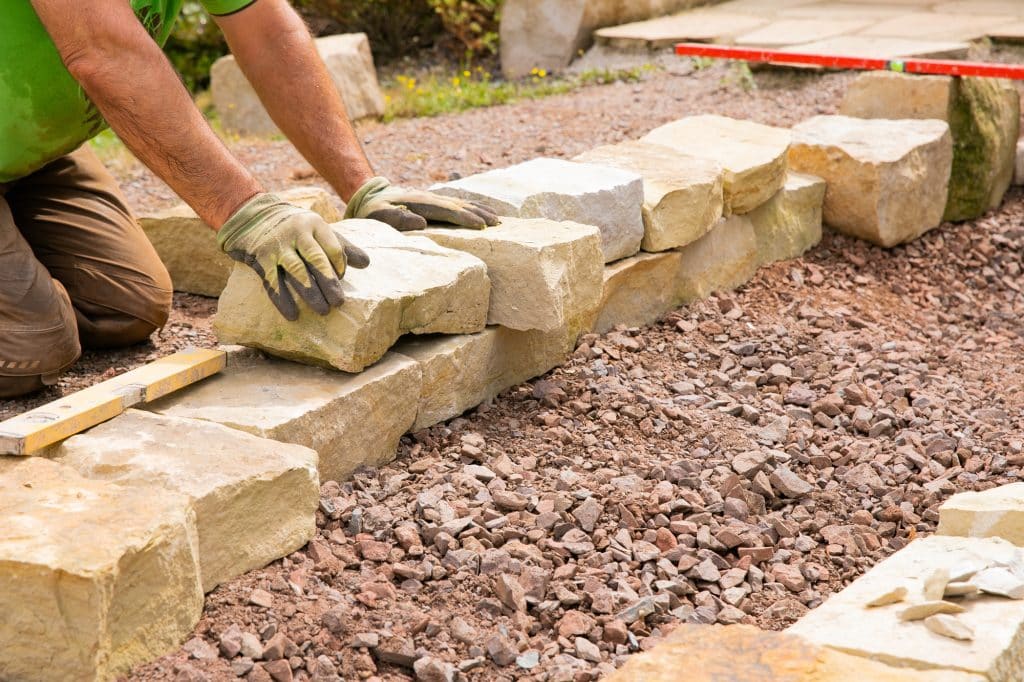 Natural stones, sourced from quarries and crafted by skilled artisans, add a touch of rustic elegance to your outdoor space. They’re often sold as paver stones and are available in various shapes, sizes, colors, and materials—from the elegant slate to the rough flagstone.
Natural stones, sourced from quarries and crafted by skilled artisans, add a touch of rustic elegance to your outdoor space. They’re often sold as paver stones and are available in various shapes, sizes, colors, and materials—from the elegant slate to the rough flagstone.
Pro Tips
Consider installing paver stone walkways to create inviting pathways that guide visitors through your lush landscape. Want to create a visual focal point? Use contrasting colors or patterns. Incorporate low-growing herbs like thyme or creeping phlox between the pavers for an extra touch of charm.
How about a raised garden bed? You can create one using stacked flagstone or build a retaining wall with weathered granite boulders. These elements add visual interest and provide excellent drainage.
If your yard features elevation changes or sloping terrain, stone stairs can be a functional and aesthetically pleasing solution. These steps seamlessly blend into your outdoor environment, enhancing visual appeal, and provide a safe and sturdy passage that allows you to navigate your yard easily.
Sand and Gravel as Functional Fillers
Made from broken down rocks, sand and gravel play a crucial role in the construction industry. In 2021, the country produced one billion tons of these sediments—cumulatively worth USD$ 9.9 billion. While known for its use in buildings and roads, you can utilize them for an exterior upgrade. (2)
Sand and gravel can provide visual separation or highlight various landscaping elements. Place them around garden beds or between pavers in high-traffic areas to add a contrasting texture to your landscape design. If placed strategically, they can also improve drainage areas that are prone to waterlogging or replace grass if you’re after less maintenance.
Pro Tip
Want to create a cozy outdoor space? Build a natural gravel patio around a fire pit made from stacked stones. Add a generous layer of gravel to provide a safe and stylish seating area.
Wood for Multiple Outdoor Structures
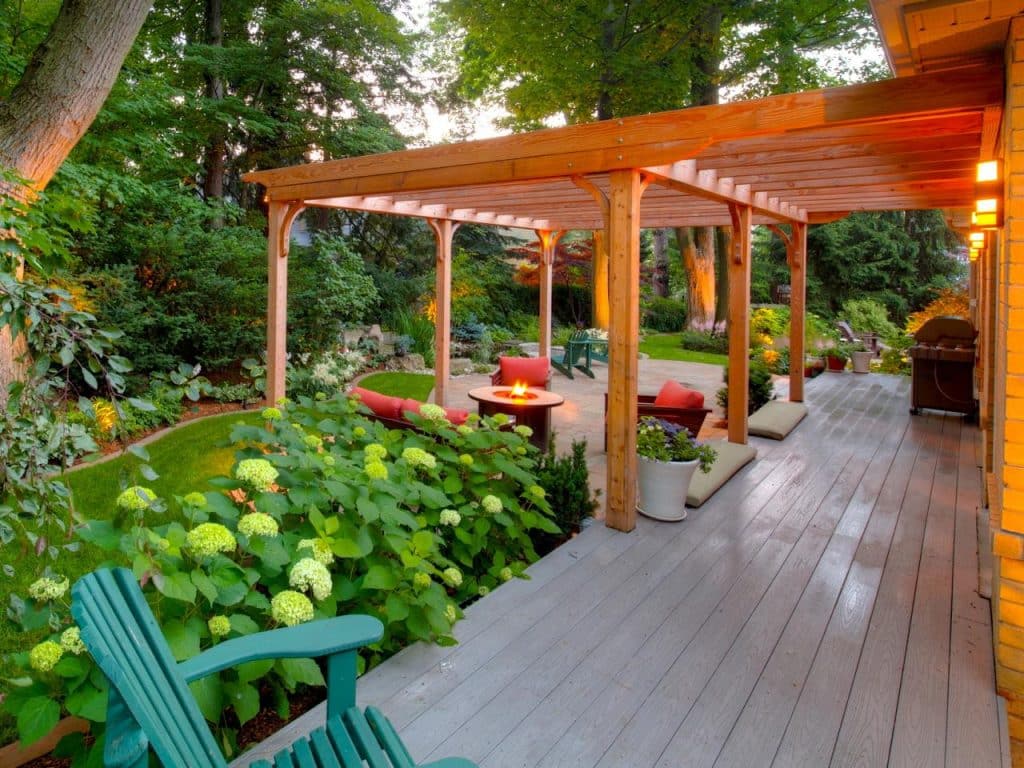 If you frequently lounge outside or have a pool, it’s important to build a privacy fences. They not only protect you from wandering eyes, but they can also double as growing platforms for trailing plants. They work well if you want to create a vertical garden.
If you frequently lounge outside or have a pool, it’s important to build a privacy fences. They not only protect you from wandering eyes, but they can also double as growing platforms for trailing plants. They work well if you want to create a vertical garden.
Another awesome thing you can do is place your plants inside wooden boxes to minimize erosion. Wooden structures like pergolas, decks, terraces, gazebos, and patios can also expand your living space, allowing you to hold gatherings and parties in style.
Pro Tip
Wooden garden boxes may be easy, but complex structures require advanced carpentry skills to breathe life into your backyard landscaping ideas.
Mulch to Protect Your Plants
Made from leaves, shredded wood bark, and chips, mulch is nature’s protective blanket. It offers numerous benefits to your soil and to you as a busy gardener. It insulates the ground by retaining moisture and suppresses weed growth.
But beyond being a multi-purpose wonder, mulch can also add a touch of aesthetics to your yard. It comes in different shades of brown, red, and black that beautifully contrast with your surrounding greenery. Place it on top of your garden beds, trees, and shrubs to enhance your yard’s natural beauty. Looking to fill the gaps of your paved walkways? It can do the trick, too, plus add a pop of color.
Pro Tip
Ditch the rigid, plastic edging and opt for free-flowing mulch borders. Define the perimeter of your flower beds with a curved edge of colorful mulch, creating a softer, more natural look.
Compost for A Lush Garden and Lawn
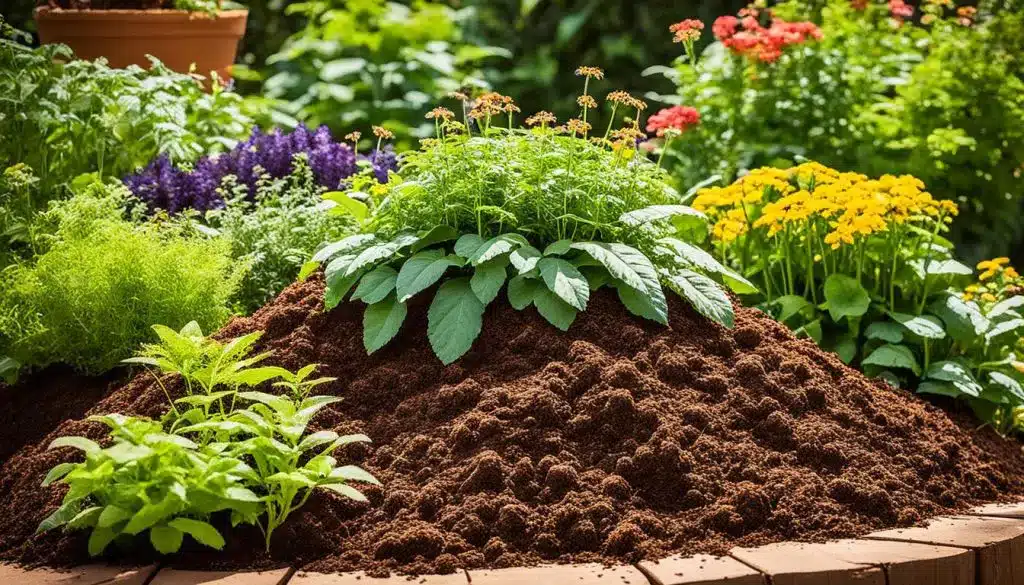 Compost is the unsung hero of a thriving yard. They’re made from kitchen scraps and yard waste, yet they’re a nutrient powerhouse for your soil. Using decomposed organic matter enriches it, promoting healthy plants and a sustainable ecosystem.
Compost is the unsung hero of a thriving yard. They’re made from kitchen scraps and yard waste, yet they’re a nutrient powerhouse for your soil. Using decomposed organic matter enriches it, promoting healthy plants and a sustainable ecosystem.
Composting also helps reduce waste management costs. A 2022 study estimated that increasing compost to waste ratio to 18% can save 30 tons of carbon emissions yearly while cutting USD$ 16 billion in municipal waste management expenditures. (3)
So, start a compost pile in your backyard, if you haven’t already. Collect organic debris from your kitchen and yard, aerate them regularly, and sprinkle some water. After a few weeks, you can mix it with soil to make raised beds before the planting season.
Pro Tip
Add mulch to your compost-rich soil after seeding. Otherwise, sprinkle compost onto your lawn, garden beds, and potted plants for a lush, vibrant growth that will leave your neighbors green with envy.
Native Plants
It can be tempting to grow unique vegetation to build an aesthetic backyard. But choosing plants native to your community or region is better for the environment. In doing so, you provide vital food and shelter for local wildlife, preserving the ecosystem.
Using endemic plants also saves you time and resources. They’re perfectly adapted to your climate, requiring less water and fertilizer to thrive. Moreover, they attract natural pest controllers like ladybugs and lacewings, keeping unwanted critters at bay.
Pro Tip
If you’re new to gardening, familiarize yourself with the native plant communities in your region first before planting. Some plants may require extra care that only experienced gardeners can provide.
Additional Tips for Using Natural Products
While incorporating natural products is the foundation of a stunning outdoor space, there are additional tricks to amplify your yard’s aesthetics. Embrace these simple yet impactful tips:
- Create focal points: Incorporate eye-catching elements such as a small pond, a rustic water feature, or a sculptural piece crafted from reclaimed wood or stone to add visual interest. Make sure they remain visible by installing outdoor lighting.
- Embrace texture and contrast: Combine plants with varying leaf textures, from the soft, velvety lambs’ ear to the spiky, structural agave. Juxtapose colors and shapes to create depth and dimension, such as pairing bold foliage with delicate blooms.
- Appreciate raw beauty: Scatter natural accents throughout your yard, such as river rocks or driftwood pieces that can double as a privacy fence. These elements promote a sense of harmony with the surrounding environment, complementing your landscape’s natural contours and features.
Sometimes, the simplest things create the best impact. Don’t always strive for perfection when integrating natural elements into your backyard oasis. However, ensure they aesthetically align with your interior design motif to create a cohesive living space.
Your Sustainable Sanctuary Awaits
Creating an aesthetic backyard can, indeed, be a project that promotes sustainability. Stick to natural materials and you get to highlight the inherent beauty of your property without causing any damage to Mother Earth. Take this guide to heart as you create an outdoor haven that’s appealing and good for the planet at the same time.
References
1. Williams, Terri. ‘The Best Ideas To Boost your Home’s Curb Appeal’. August 14, 2023. Accessed online.
2. Willett, Jason Christopher. ‘Sand and Gravel (Construction)’. US Geological Survey Mineral Commodity Summaries. January 2022. Accessed online. https://pubs.usgs.gov/periodicals/mcs2022/mcs2022-sand-gravel.pdf
3. Farhidi, Faraz, et al. ‘How the US Economy and Environment can Both Benefit From Composting Management’. October 15, 2022. Accessed online. https://www.ncbi.nlm.nih.gov/pmc/articles/PMC9575438/

